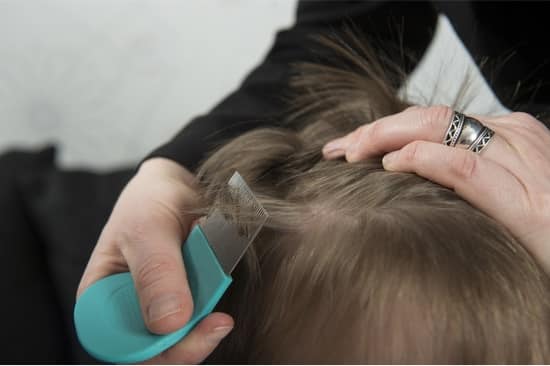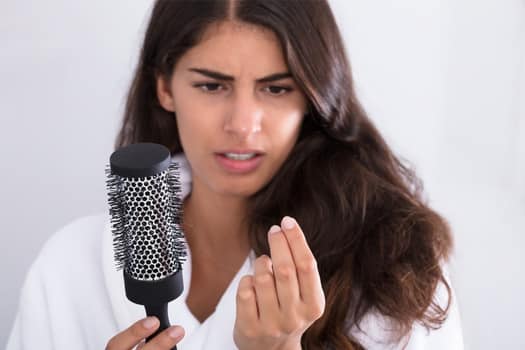If you have itchy spots on your scalp, you might wonder if you have bed bugs in your hair. It’s possible to mistake bed bugs for hair lice if you don’t know what they look like.
The bodies of bed bugs and hair lice are the same shape, and they have six legs. But bed bugs are larger than lice. They are dark brown instead of off-white. Lice live in hair, but bed bugs live in furniture and hidden cracks. You catch lice through physical contact, but not bed bugs.
We cover whether bed bugs live in hair, and if not, why not. Then we will explain how to tell the difference between bed bugs and lice without fail.
Do You Get Bed Bugs in Hair Like Lice?
Bed bugs cannot live in head hair or body hair. They aren’t designed to, as their body size and shape is wrong. The way they evolved is entirely different to head lice.
Bed Bug Size and Shape
The main reason why you don’t get bed bugs in hair is their size and shape. When you look at pests that live in hair, like lice, they are all small. They have to be so that they can crawl between the hairs on your scalp.
Bed bugs are roughly the size and shape of an apple seed. Their bodies are flat, but wide, and wider towards the back than the front. They are easily visible to the naked eye unless you try to find one in the dark. Here’s some information on how to identify bed bugs.
Lice, on the other hand, are much smaller. Adult lice are around the size of a sesame seed. This means that while they are a lot smaller than bed bugs, they are still visible. However, because they live in hair, they can be difficult to spot despite their size. They are good at hiding.
Another problem is that bed bugs are too wide. Other pests that live in the hair are narrow, like lice and fleas. This helps them navigate around your scalp. Bed bugs are much wider than other pests.
Bed Bug Evolution
Bed bugs evolved from bat bugs, thousands of years ago. Bat bugs live in the cracks of the walls of caves. They come out to feed on the bats there. When people started living in caves, bat bugs started feeding on us. They still exist in some parts of the world today.
It was during this time that bat bugs/bed bugs learned not to live on animals, but near them. That’s because bats feed on bat bugs. Bats eat insects, so if they ever spot a bat bug, they will eat it. Over time, only the bugs that didn’t live on the bats, but hidden away, survived and bred.
Bed bugs still prefer not to live on people for the same reason. If a person spots a bed bug, they will kill it. Therefore, if they hide away, they have a better chance of surviving and breeding.

Bed Bugs Don’t Live on You
Even if you slept in bed all day, the bed bugs wouldn’t sit on you and continually feed. They will come out, feed for twenty minutes or so, and head back to their hiding place.
Lice, on the other hand, do live on people. Their entire life cycle takes place on the human body. This means that they live, feed, mate, and lay eggs in your hair. This means that they travel from person to person through physical contact only.
Bed Bugs vs. Head Lice Compared
If you’re still confused about whether the pest pestering you is a bed bug or louse, don’t worry. There are many physical differences between the two that you can spot.
What Are the Similarities?
While there are many differences between bed bugs and lice, there are also similarities. They are:
- Both are ectoparasites that feed on people. ‘Ectoparasite’ means a pest that lives outside the host, rather than inside the host, like worms.
- Both feed on blood.
- Both expand their abdomen when they feed, so that they can feed even more.
- Both are in the Insecta class, i.e., insects.
- Both have six legs.
The main similarity is in body shape and structure. If you get both bugs under a microscope, they are quite similar. They both have large abdomens, which are segmented laterally. Both bugs’ abdomens are wide but with a tapered end, too.
They each have small heads, much smaller than their thorax and abdomen. They each have six legs, although the placement of their legs is different.
What is Their Color?
Bed bugs are a dark brown color. If they feed, they take on a deeper red appearance, because they feed on blood. They are roughly the same color as the places that they hide in, i.e., dark corners and cracks.
Lice are not the same color. They appear an off-white to light brown color. When they feed, lice to take on a darker appearance. However, they don’t get as dark as bed bugs do.
Because of their color, both bed bugs and lice can be hard to spot. Both bugs try to match the color of their surroundings.
How Many Legs Do They Have?
Another difference between bed bugs and lice is their legs. They both have six. Their legs are jointed, like the legs of other bugs of a similar size.
However, that is where the similarities end. Lice have legs that they can wrap around and stick to hair. This helps them stay in place when you move around during the day. This is one way in which they have adapted to their environment.
Bed bugs’ legs are different. They cannot wrap around a hair like a louse’s legs can. This means that hair is not the right environment for a bed bug.
Another difference is the placement of the legs on bed bugs and lice. On lice, they are further up the body towards the head. They are grouped together, three on each side. A bed bugs’ legs are spread further apart along the body.
This difference is difficult to spot if you aren’t an expert. It’s especially difficult to spot because lice are small. Their legs are difficult to spot. You can only tell if you put the bugs under a microscope.
Do They Cause Spots?
Bed bugs cause large spots. When they bite, they inject a small amount of fluid that acts as a numbing agent. This means that you won’t feel them bite you, so you don’t brush them away.
This fluid has an unintended effect. Because it is a foreign fluid, the body experiences an allergic reaction to it. The area swells up, turns red, and starts itching. These spots are also referred to as welts, and can be unbearably itchy.
Lice don’t cause these spots. They are small enough that you don’t feel them biting. Because you don’t feel them, they don’t need to use a numbing agent. They don’t cause spots in the same way.
That being said, lice are still itchy. It’s just that the spots they cause are tiny.

How Do You Get Bed Bugs and Lice?
You catch lice through physical contact. They live on your scalp, or in the other hair of your body. They spread when somebody else gets close enough for them to travel from your head to theirs.
According to Economic Entomology, bed bugs don’t spread by these means. Instead, they spread by traveling. When a female is ready to lay eggs, she will leave her harborage. She can then spread in one of two ways:
- She will get inside your belongings in the hope that you will take her with you accidentally.
- She will walk until she reaches a new hiding place that isn’t already occupied.
She will then start laying her eggs in her new harborage. But because bed bugs don’t live on you or your hair, you can’t catch them through physical contact.
Bugs Mistaken for Lice
The only other bugs that may live in your hair are fleas.
Fleas look more like lice than bed bugs do. They are about the same size. The big difference is that fleas and lice are different colors. Fleas are black/dark brown while lice are light brown.
Other bloodsucking pests, like ticks, don’t look like lice at all. They are much bigger. Like bed bugs, they also don’t live on their host. They burrow their head under the skin to feed which lice don’t do.
If you’re still unsure what the problem is, ask a pest controller. Put the bug in a clear bag without squashing it. The pest controller can usually tell from one look what the bug is.
Are Bed Bugs and Head Lice Related?
Despite both feeding on human hosts, bed bugs and head lice are not related. Bed bugs are part of the genus Cimex, which is in the family Cimicidae, and the order Hemiptera. The order Hemiptera consists of bugs that use piercing and sucking mouthparts to either feed on sap or blood.
Bugs in the order Hemiptera are also known as ‘true bugs.’ That’s because they have a shell and six legs. Head lice aren’t in the same order, however.
Head lice are in the order Phthiraptera, alongside pubic lice and body lice. They are part of the superorder Psocodea, which contains 11,000 different species of louse. These lice affect many species of animals and plants around the world.
Are Bed Bugs or Lice Worse?
Bed bugs are much worse than lice. There are several reasons why.
Bed bugs are bigger. This means that they need to drink more blood. They feed for a longer time so that they can fill themselves. The tubes they use to drink, like a mosquito, are bigger than those of lice.
Bed bugs live in furniture, and hidden cracks, while lice live on your body. Arguably this makes lice worse because it’s more disgusting that they live on your scalp. But this makes them much easier to kill than bed bugs.
Also, bed bugs cause spots, but lice don’t. Both bugs use numbing saliva to stop you feeling their bites. This then causes an allergic reaction. Bed bugs use more, so their bites create itchy lumps. Lice are itchy, but don’t create spots.
Whatever the problem is, you should look to correct it straight away. Bed bugs should be treated by a professional pest controller, either through heat treatment or pesticide. You can get rid of lice with shampoo from a pharmacist.

